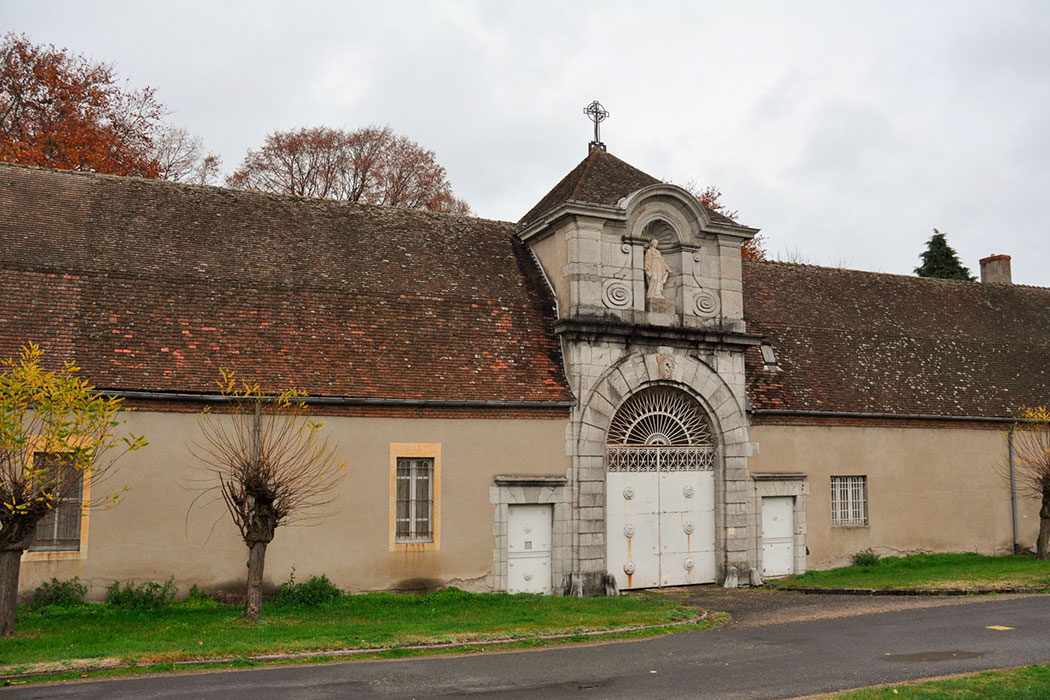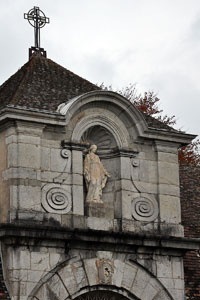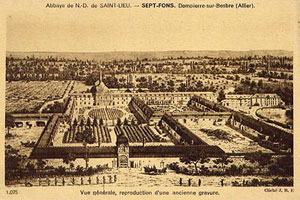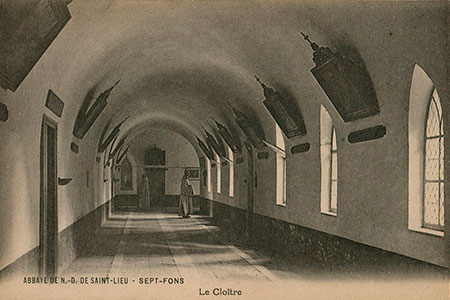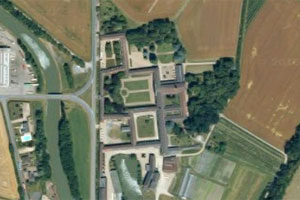The Cistercian abbey of Sept-Fons was founded in 1132 from the monastery of Fontenay (Côte-d’Or), itself dependent on Cîteaux, both located in Burgundy. At that time it was known as Notre-Dame de Saint-Lieu. It is said that Saint Bernard of Clairvaux himself took part in its foundation and that some of the monks who arrived at Saint-Lieu were his relatives.
Several notable figures also supported the foundation, among them Guichard de Bourbon and Hudin de Jaligny, who made generous donations to ensure its success. The first abbot was Richard. The foundation received papal approval in 1158, under Pope Adrian IV. Over time, the monastery suffered the social upheavals caused by the Hundred Years’ War and, by the 16th century, had fallen into decline and was almost abandoned. In 1566, the first commendatory abbot, Charles d’Ailliboust, arrived and worked to restore the community.
In 1656, Eustache de Beaufort (1637–1709) was appointed commendatory abbot of Sept-Fons and, in 1661, took up the post. He promoted a deep reform of monastic life, parallel to that carried out at the same time by Armand Jean Le Bouthillier de Rancé (1626–1700) at the Abbey of La Trappe (Orne). The monastery was soon completely rebuilt, and in 1762 Sept-Fons even took part in the restoration of the Abbey of La Val des Choux (Côte-d’Or). When the recovery and reconstruction of Sept-Fons had just been completed (1789), the community was expelled as a result of the Revolution (1791), and many of its members perished.
The property was sold, while the monks sought refuge in various temporary locations. Part of the community regrouped at the former Abbey of Notre-Dame du Gard (Somme). From there, in 1816, they were able to repurchase Sept-Fons, which resumed monastic life in 1845. From 1892 onwards, the various reformed Cistercian currents —among them that of Sept-Fons— were united, forming the Order of Cistercians of the Strict Observance, also known as the Trappists. Today, Sept-Fons is a large and active abbey that continues its monastic tradition in this place and has founded several new monasteries.
Affiliation of Sept-Fons
According to Originum Cisterciensium (L. Janauschek, 1877)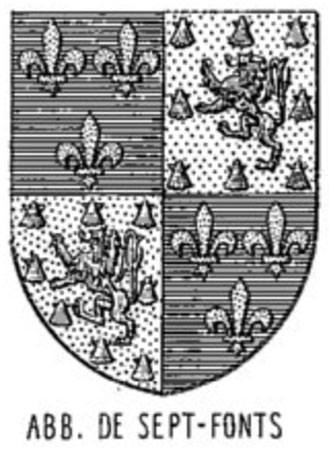
According to Armorial du Bourbonnais (1857)
Bibliothèque nationale de France
- ABBAYE DE SEPT-FONS (2003). Abbaye Notre-Dame de Sept-Fons. Abbaye Sept-Fons
- ANÒNIM (1784). Précis de la vie de l’Abbaye de Sept-Fons en Bourbonnois. Moulins: Faure
- HÉLYOT, Hippolyte (ed. 1850). Réforme de Sept-Fons. Dictionnaire des ordres religieux, ou Histoire des ordres monastiques, vol. 3. París: A. Catholiques
- JANAUSCHEK, Leopoldus (1877). Originum Cisterciensium. Vol. 1. Viena
- PELLICCIA, Guerrino; dir. i altres (1988). Sept-Fons. Dizionario degli istituti di perfezione. Vol. 8. Roma: Ed. Paoline
- RELIGIEUX DE CE MONASTÈRE, Un (1873). Sept-Fons. Étude historique sur l'abbaye de N.-D. de Saint-Lieu Sept-Fons. Moulins: Ducroux
- SAINT-MAUR, Congregació de (1725). Gallia Christiana in provincias ecclesiasticas distributa. Vol. 4. París: Typographia Regia
